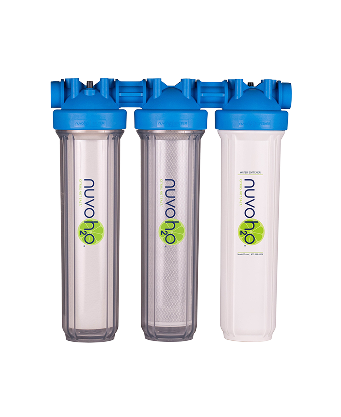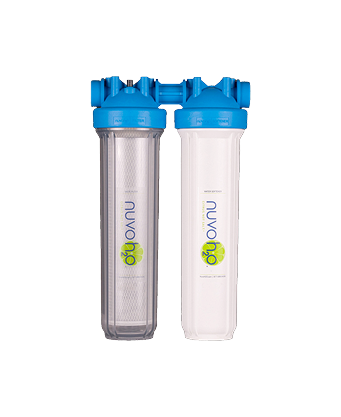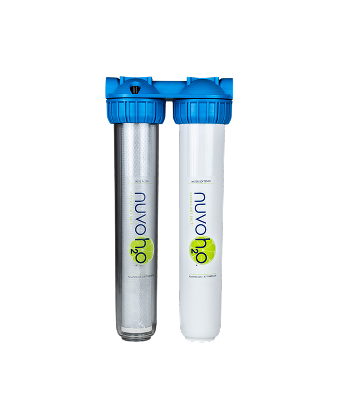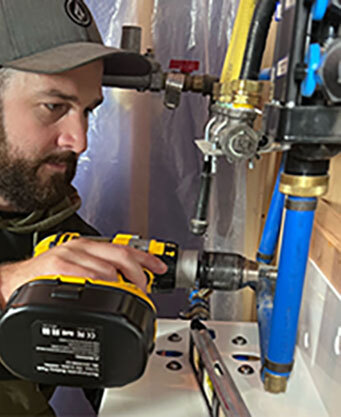
3 Ways you Need to Winterize Your Home
Posted by Tait Washburn on 15th Dec 2021
Winter is here, and whether you’ve already seen snow this year or it’s just starting to get chilly every homeowner knows they have to get ready. Every winter, your heating bill goes up and in places with snow, there is the risk of damaged pipes and outdoor appliances.
So for new homeowners or those that are who just want to lower their heating bill this year, we’ve collected some tips and tricks on winterizing your home, inside and out.
Outside your Home
Prepping the outside of your home can be important to prevent accidents that can harm you, your house, or your guests, and there’s lots of things that need to be done! Some things are obvious, like salting the sidewalks and your driveway to prevent slipping. However, there are more things to do outside your home.
Trim your Trees
First, you should look at the trees on your property and prep them for snow and ice. Old, dead, or overgrown branches are vulnerable to heavy snow or ice damage and may fall under winter stress. These branches could permanently damage the tree they’re attached to, but more dangerously could fall on your home, your vehicles, or people!
Also, trimming these trees can help with the next step in prepping your home for winter.
Check your Gutters and Roof
The gutters in your home are very vulnerable to snow and ice, so prepping them for the winter is a must. Before the weather gets too cold and icy but after you’ve cut the branches of your trees you should clean the clumps of leaves and dirt in the gutters. Clogged gutters can cause melting snow to overflow or re-freeze, making icicles, damaging your gutters or causing potential flooding if they’re over basement windows.
Once you’ve cleared out the clogs in the gutters, installing Gutter Guards is helpful to prevent clogged drains in the middle of winter when it’s difficult to get to them.
While you’re up on the roof, you should check for broken, frayed, curled, or missing shingles, or other signs of damage or clumps of leaves for similar reasons.
Bring in the Outdoor Gear
The last step in prepping the outside of your home for winter is to bring the more vulnerable outdoor tools into your garage, home, or shed. Garden hoses should be drained of water and brought out of the cold to prevent them from bursting due to ice expansion. Other tools, such as lawnmowers or leaf blowers need to be sheltered while it’s too cold to be used. If possible, you should keep any outdoor tools inside during the winter to prevent water and ice damage during the winter months.
Keep the Heat Inside Your Home
When it comes to the inside of your house, the biggest thing you need to worry about is your heating bill and the best way to cut that bill down is to keep the heat in your home and give your various heating appliances a break. But you also have to be aware of potential water damage as well. But there are a few easy steps to prevent both.
Protect Your Pipes
The most pressing task is to prevent your pipes from freezing, which can cause them to burst and result in costly water damage. If at any time you’re going to be gone for more than a day or two during freezing temperatures, you’ll want to leave one sink on with a small trickle of water to prevent ice from forming in your pipes.
Additionally, you’ll want to find any pipes inside or outside of your home that might be exposed to cold and insulate them. Attics and crawl spaces are often not insulated and have many pipes running through them. Putting insulation in those spaces or installing heat tape to those pipes can prevent most pipes from freezing.
Insulate your Home
Like we just mentioned, your attic and crawl spaces are likely not insulated, as are most unfinished basements. Not only will that possibly hurt your pipes, having uninsulated sections of your house will let more heat out of your home and increase your heating bill!
Fiberglass insulation is cheap and easy to install, but should only be used if you plan on encasing it in drywall or similar, or in areas, you won’t be spending much time in, as the fiberglass can irritate exposed skin. Be sure to wear gloves when installing it, or contact a professional handyman if you are not confident in your ability to install your own insulation.
Find the Heat Leaks
Even after you’ve insulated all the walls in your home, there are a few places you’ll want to check for heat leaks.
Your windows are likely to leak heat. If you have condensation or frost on the inside of your windows or visibly broken seals around the edges, that’s a sign that you’re losing heat! You have your choice of using caulk, weatherstrip tape, or window insulation film to reseal the edges.
Your doors can also be a huge issue with lost heat, even when they’re closed! Mail slots, dog doors, and just poor seals on your front and back door can be a huge contributor to your heating bill. Draft guards are generally recommended for edges of the door, or weatherstrip tape for other gaps such as mail slots. If you need to replace your front door entirely, make sure to get an outside door and not an inside one!
Lastly, if you have a chimney, a chimney balloon is a great way of reducing lost heat, just be sure to remove it when you use your fireplace!
Optimize Your Appliances
The last step to fully winterizing your home is to get all your heating and cooling appliances in order, and a few small adjustments can make a huge difference in your comfort and energy savings.
Ceiling Fans and Fridges
An easy adjustment is to change the directions your ceiling fans rotate. During the summer months, it’s best to have your fans set counter-clockwise to pull up and circulate cold air from the floor but during the winter they should be set to rotate clockwise, which will push hot air near the ceiling towards the floor!
You should also check your fridge for breaks in the rubber seal in the door and set it to energy-saving mode if possible so it doesn’t fight against your furnace while it’s cold outside. In the same vein, you should replace your air filters for your furnace. Dirty air filters make your furnace work harder and increase your heating bill, so are definitely worth the cost and effort.
Furnace Efficiency
Another way to help your furnace work smart, not hard, is by getting a programmable thermostat because it can make a huge difference in how much it costs to heat your home. Most smart thermostats come with energy-saving settings that automatically lower the temperature of your home when you’re sleeping or not there. But you can do this manually if you are willing to put in the time and effort. Be sure to not lower the temperature lower than 65 degrees and to never increase the temperature by more than a few degrees every hour to make sure your furnace doesn’t have to work so hard that it costs you more than you save!
Your Water Heater
Lastly, showing your water heater some love in the winter can have a huge impact on your utility bills. Water heaters often collect sediment throughout its lifespan which reduces how effective it is, so you should consider flushing it out. There should be a water drain nearby for exactly this. If you have hard water, your water heater also likely has hard water scale built up on the heating element, which also reduces how well it runs and how much it costs you. This can’t be flushed out as easily, but we would recommend looking into our Water Heater System for a cleaner and more efficient water heater.
Winter is Wonderful
The cold winter months can be a beautiful time of year, and with the right preparations, they don’t have to be a burden on your pocketbook. The tips and tricks presented here are general recommendations, but always be sure to talk to professional plumbers, HVAC technicians, or other handymen if you aren’t sure what your home needs.
Any steps we can take to reduce our power consumption, prevent potential damage to our home, or even just improve our own comfort is worth a little effort and time. Stay cozy in your home without fear of a big bill, and enjoy the winter season with us, here at NuvoH2O.
To Learn More
Winterizing your home or rental is essential for comfort and energy efficiency. For expert tips and detailed guidance, check out this fantastic resource on Rent.com. Read the full article here: Preparing Your Vacation Rental for Winter | Rent. To discover steps for preparing your vacation rental for winter from harsh weather, improve heating efficiency, and ensure a cozy winter season. Don't wait—prepare your space today!









